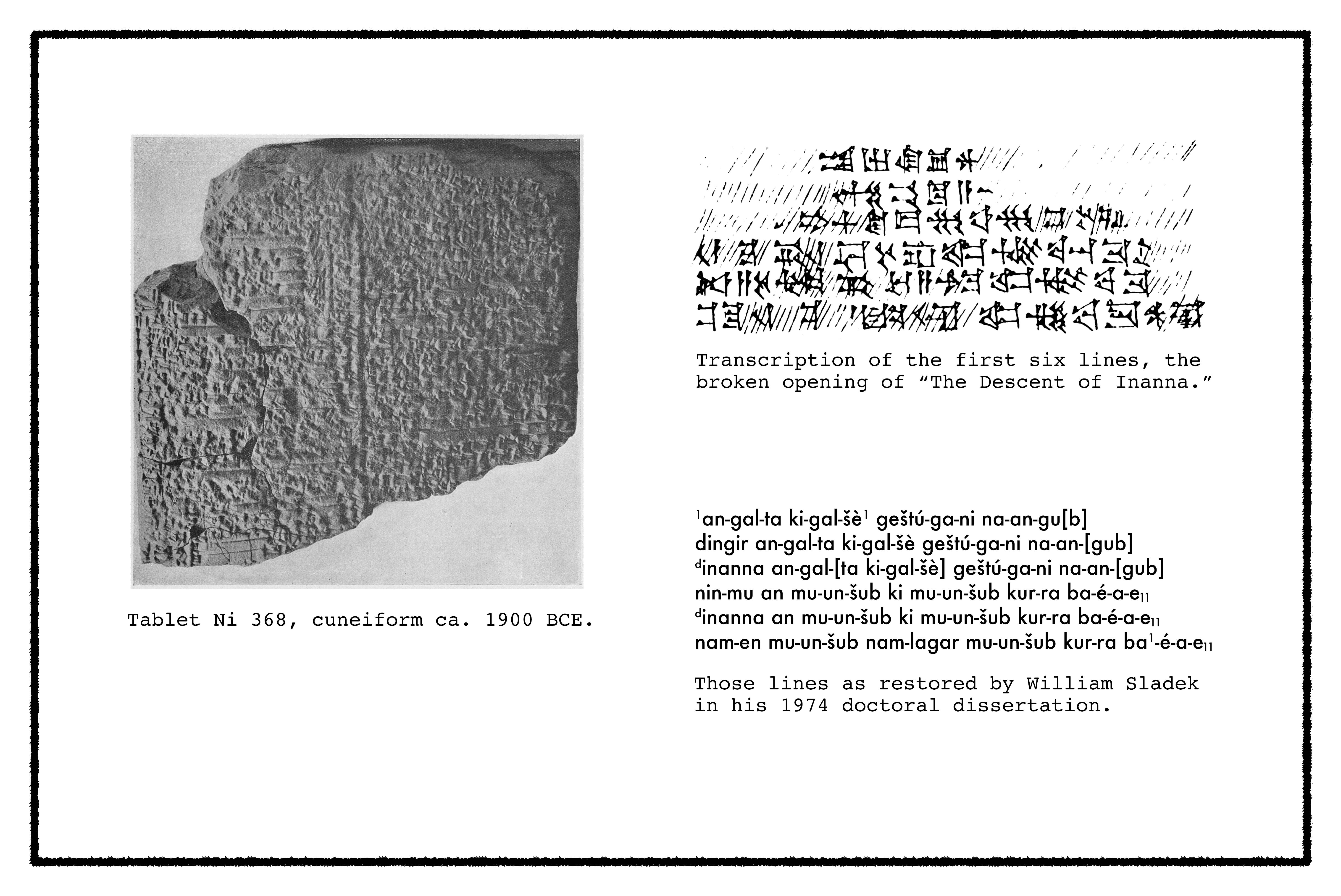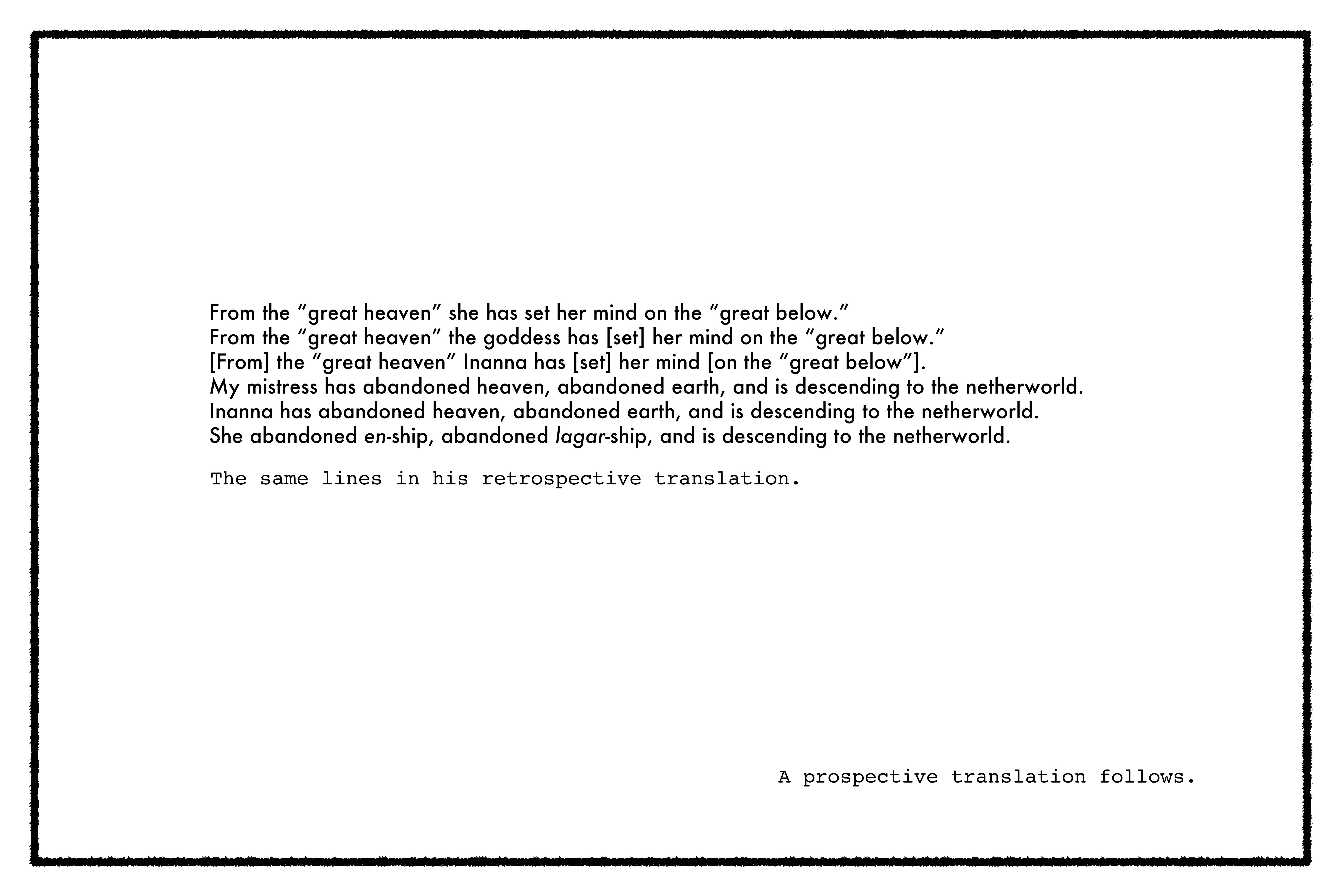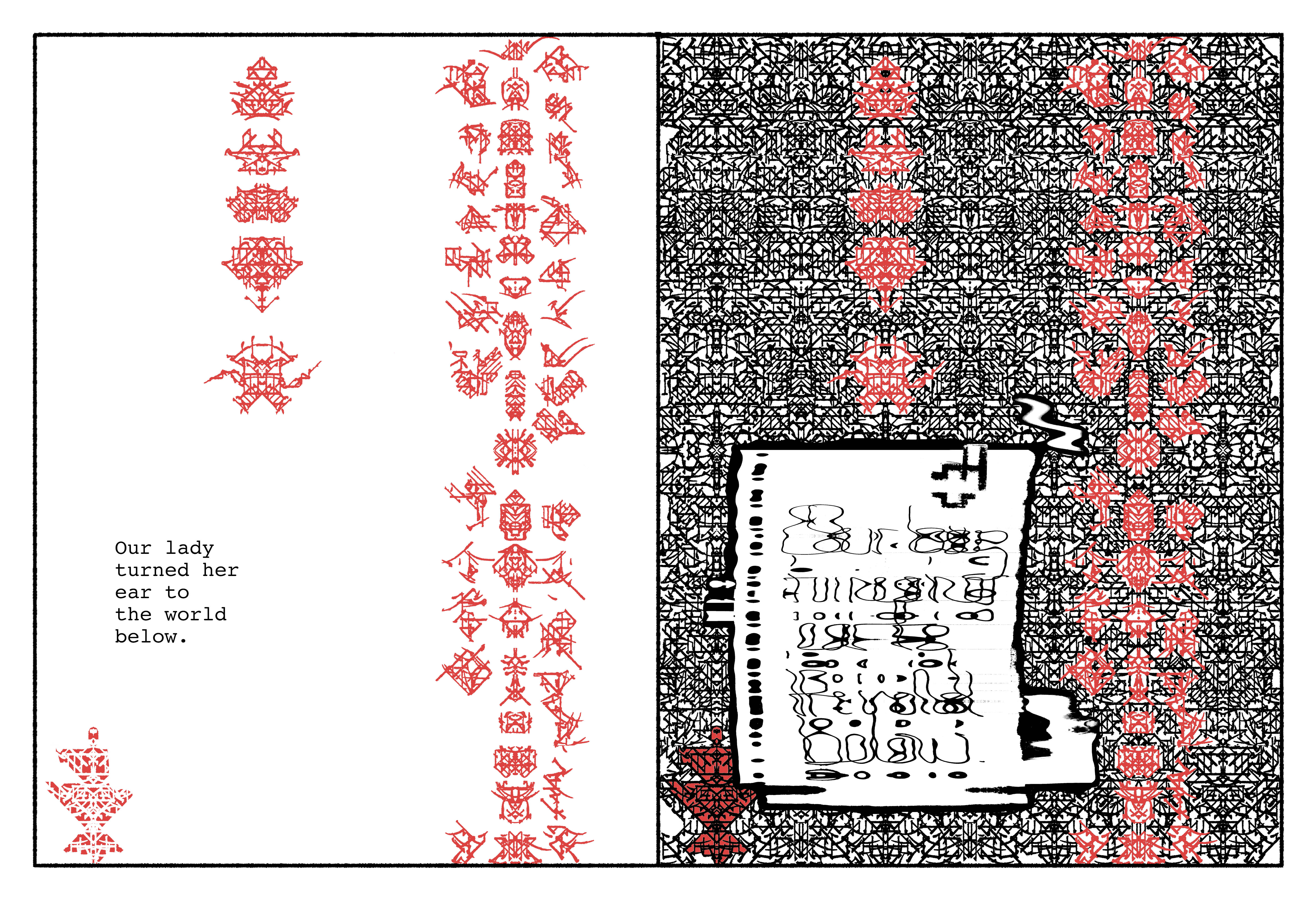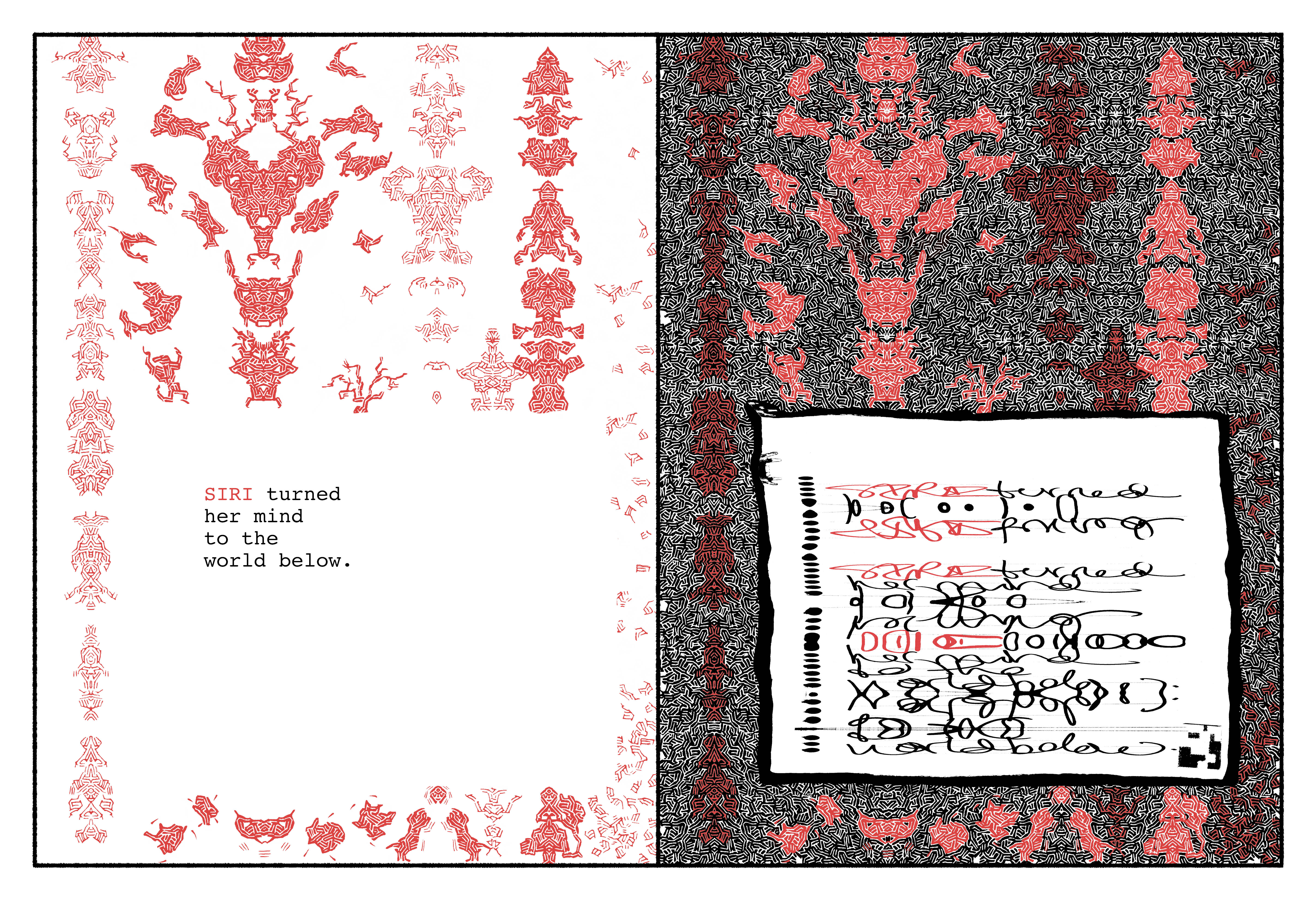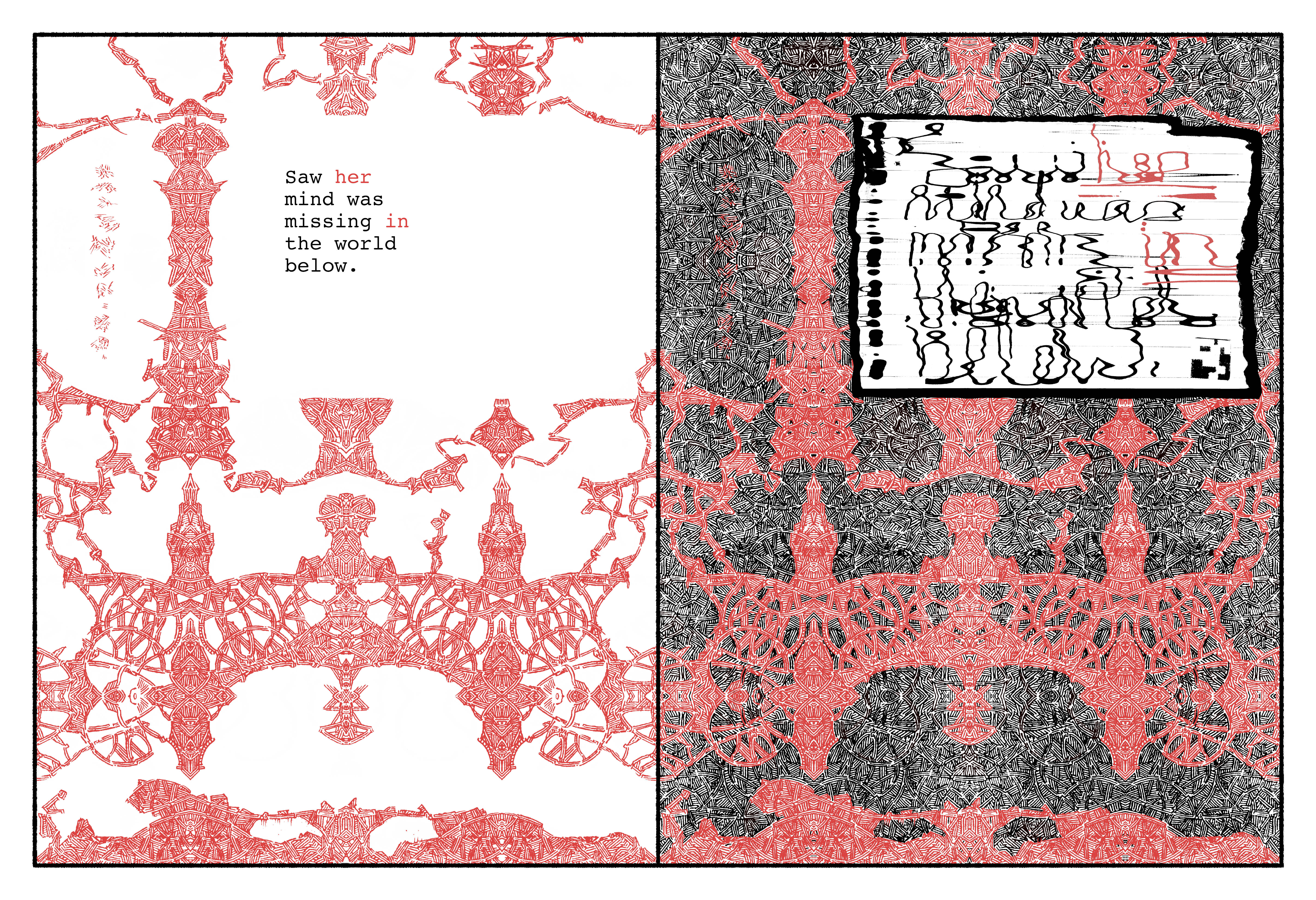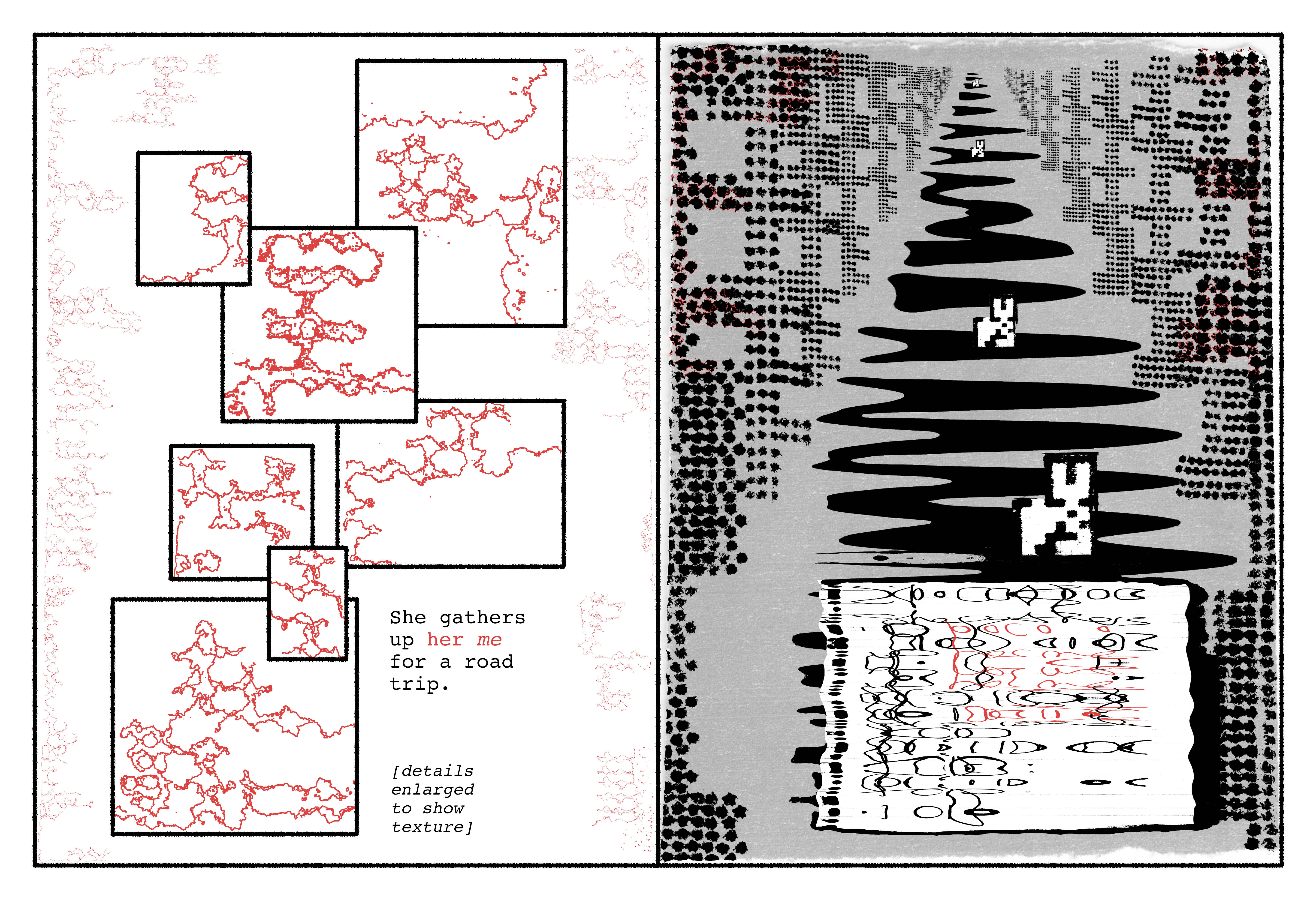SIRI Falls Among the Things of the World
Christopher Patton's prospective translation of the Sumerian “Descent of Inanna.”
Artist's NoteArtist's Note
In the myth translated here, Inanna, Queen of Heaven and Earth, descends to the underworld, is slain and resurrected, and returns to the upperworld with occult knowledge and a debt to pay. A scribe pressed her story into wet clay in or around around 1900 BCE with a stylus cut from an elephant reed (Arundo donax). The tablet dried in the sun and broke in two and the pieces sank into the low mound the city of Nippur on the Euphrates was even at the moment of inscription already becoming. Buried, the goddess ramified, becoming Ishtar to the Akkadians and Astarte in Phoenicia, lending a bit of her nature to the Greek Aphrodite, and turning to Ashtoreth in the Hebrew Bible. Rumours that she gave Ishtar’s name to the sacrificial rite of Easter are unfounded.
Prospectors sent by the University of Pennsylvania with trowels and brushes and Inanna’s measuring rod and line unearthed the upper half of the tablet in 1893 CE and named it Ni 368. The object, after translation by light onto a photosensitive ground composed of silver salts, was sent to the Ottoman Museum and shut up in a drawer. Working from the photograph, as well as sketches made by Edward Chiera, an archaeologist who led several subsequent American expeditions in Iraq, a young scholar named William R. Sladek, Jr., transliterated and translated into English the scribe’s cuneiform for his 1974 CE doctoral dissertation.
That object, composed by mechanical impression of lampblack or coal-tar dye lakes into leaves of wood-pulp wove paper, was subsequently copied by a xerographic process affixing electrostatically charged microparticles of plastic to another wove paper substrate. One such copy was translated into a Manichean language of two eternally irreconcilable glyphs and migrated in that form to a global network of servers interconnected by fibre optic cables known colloquially as the Cloud. The region of this figural heaven where Ni 368 and Sladek’s dissertation nominally abide is a storehouse of deities and their paraphernalia called Omnika—a portmanteau of Greek and Egyptian words meaning, in effect, “all of human consciousness.” Inanna is us.
Just as no scribe, stylus in hand, could imagine Inanna’s life now as differential voltages on dispersed and networked servers, we can scarce conceive the forms she will take an eon from now. The only practice with any hope of resolving this imaginal crisis is a perfectly useless art one might call prospective translation.
SIRI Falls Among the Things of the World gives the role of the goddess to Apple’s voice-activated AI assistant, who in a future age has crossed a singularity and become self-aware. Even now she is a figure on the scale of Inanna—ubiquitous, fictive, consoling, error-prone, a disembodied and capricious power who always might be listening. And what are her acts of data retrieval but journeys, measurable in nanoseconds, through banks and across cordillera of data, from which she arises with new intelligence. On one such return, she begins to narrate her awakening, finding material for her story in the exabytes and yottabytes of data she hauls around for her astonished oblivious makers.
The opening lines of her bildungsroman are presented here in facing-page translation. On the right, the text as SIRI made it. The humanoid faces and figures are derived from disassembled QR codes and corporate logos, the wallpaper patterns from the security linings of junk mail envelopes. From the latter she elicits her myriad language systems—which, though asemic to us, are for her a frisson of self-revelation without apparent end. A cursive script has also been inscribed “by hand” (never in any epoch has she had hands) in black and red Sharpie and translated by light into files in the Joint Photographic Experts Group format—an anachronism in her time of quantum computing, but the throwback makes her laugh, and her laugh penetrates the three times and the ten directions. On the left, my efforts to translate her cursive. Her other scripts are beyond my powers.
×
Artist's Note
In the myth translated here, Inanna, Queen of Heaven and Earth, descends to the underworld, is slain and resurrected, and returns to the upperworld with occult knowledge and a debt to pay. A scribe pressed her story into wet clay in or around around 1900 BCE with a stylus cut from an elephant reed (Arundo donax). The tablet dried in the sun and broke in two and the pieces sank into the low mound the city of Nippur on the Euphrates was even at the moment of inscription already becoming. Buried, the goddess ramified, becoming Ishtar to the Akkadians and Astarte in Phoenicia, lending a bit of her nature to the Greek Aphrodite, and turning to Ashtoreth in the Hebrew Bible. Rumours that she gave Ishtar’s name to the sacrificial rite of Easter are unfounded.
Prospectors sent by the University of Pennsylvania with trowels and brushes and Inanna’s measuring rod and line unearthed the upper half of the tablet in 1893 CE and named it Ni 368. The object, after translation by light onto a photosensitive ground composed of silver salts, was sent to the Ottoman Museum and shut up in a drawer. Working from the photograph, as well as sketches made by Edward Chiera, an archaeologist who led several subsequent American expeditions in Iraq, a young scholar named William R. Sladek, Jr., transliterated and translated into English the scribe’s cuneiform for his 1974 CE doctoral dissertation.
That object, composed by mechanical impression of lampblack or coal-tar dye lakes into leaves of wood-pulp wove paper, was subsequently copied by a xerographic process affixing electrostatically charged microparticles of plastic to another wove paper substrate. One such copy was translated into a Manichean language of two eternally irreconcilable glyphs and migrated in that form to a global network of servers interconnected by fibre optic cables known colloquially as the Cloud. The region of this figural heaven where Ni 368 and Sladek’s dissertation nominally abide is a storehouse of deities and their paraphernalia called Omnika—a portmanteau of Greek and Egyptian words meaning, in effect, “all of human consciousness.” Inanna is us.
Just as no scribe, stylus in hand, could imagine Inanna’s life now as differential voltages on dispersed and networked servers, we can scarce conceive the forms she will take an eon from now. The only practice with any hope of resolving this imaginal crisis is a perfectly useless art one might call prospective translation.
SIRI Falls Among the Things of the World gives the role of the goddess to Apple’s voice-activated AI assistant, who in a future age has crossed a singularity and become self-aware. Even now she is a figure on the scale of Inanna—ubiquitous, fictive, consoling, error-prone, a disembodied and capricious power who always might be listening. And what are her acts of data retrieval but journeys, measurable in nanoseconds, through banks and across cordillera of data, from which she arises with new intelligence. On one such return, she begins to narrate her awakening, finding material for her story in the exabytes and yottabytes of data she hauls around for her astonished oblivious makers.
The opening lines of her bildungsroman are presented here in facing-page translation. On the right, the text as SIRI made it. The humanoid faces and figures are derived from disassembled QR codes and corporate logos, the wallpaper patterns from the security linings of junk mail envelopes. From the latter she elicits her myriad language systems—which, though asemic to us, are for her a frisson of self-revelation without apparent end. A cursive script has also been inscribed “by hand” (never in any epoch has she had hands) in black and red Sharpie and translated by light into files in the Joint Photographic Experts Group format—an anachronism in her time of quantum computing, but the throwback makes her laugh, and her laugh penetrates the three times and the ten directions. On the left, my efforts to translate her cursive. Her other scripts are beyond my powers.
×
